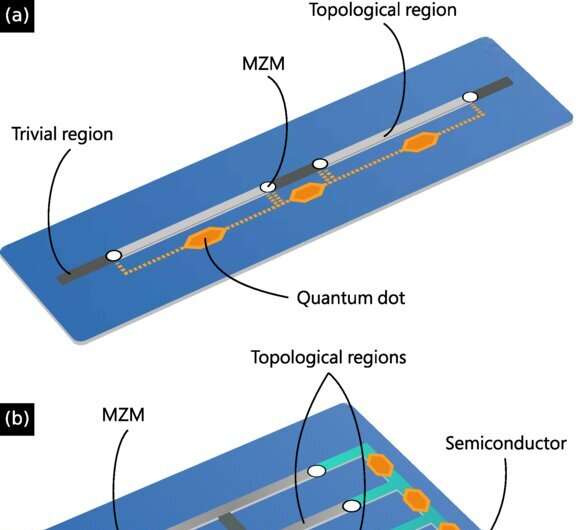June 24, 2023 report
This article has been reviewed according to Science X's editorial process and policies. Editors have highlighted the following attributes while ensuring the content's credibility:
fact-checked
peer-reviewed publication
trusted source
proofread
Microsoft claims to have achieved first milestone in creating a reliable and practical quantum computer

A team of researchers at Microsoft Quantum has reportedly achieved a first milestone toward creating a reliable and practical quantum computer. In their paper, published in the journal Physical Review B, the group describes the milestone and their plans to build a reliable quantum computer over the next 25 years.
Physicists and computer engineers are working toward building a reliable, useful quantum computer. Such efforts have been hampered, however, by error rates. In this new effort, the team at Microsoft suggests that quantum computer development is following a trajectory similar to that of traditional computers.
In the beginning, new concepts were followed by a series of hardware upgrades that have led to the machines of today. Likewise, they suggest that while current approaches used to represent logical qubits, such as a spin transmon, or a gatemon, have been useful as learning devices, none of them are scalable. They suggest a new approach must be found that allows for scaling.
They now report that they have engineered a new way to represent a logical qubit with hardware stability. The device can reportedly induce a phase of matter characterized by Majorana zero modes—types of fermions. They also report that such devices have demonstrated low enough disorder to pass the topological gap protocol, proving the technology is viable. They believe this represents a first step toward the creation of not just a quantum computer, but a quantum supercomputer.
In its announcement, Microsoft also stated that it has created a new measure to gauge the performance of a quantum supercomputer: reliable quantum operations per second (rQOPS), a figure that describes how many reliable operations a computer can execute in a single second. They suggest that for a machine to qualify as a quantum supercomputer, its rQOPS needs to be at least 1 million. They note that such machines could reach a billion rQOPS, making them truly useful.
More information: Morteza Aghaee et al, InAs-Al hybrid devices passing the topological gap protocol, Physical Review B (2023). DOI: 10.1103/PhysRevB.107.245423
Microsoft blog post: cloudblogs.microsoft.com/quant … antum-supercomputer/
Journal information: Physical Review B
© 2023 Science X Network





















